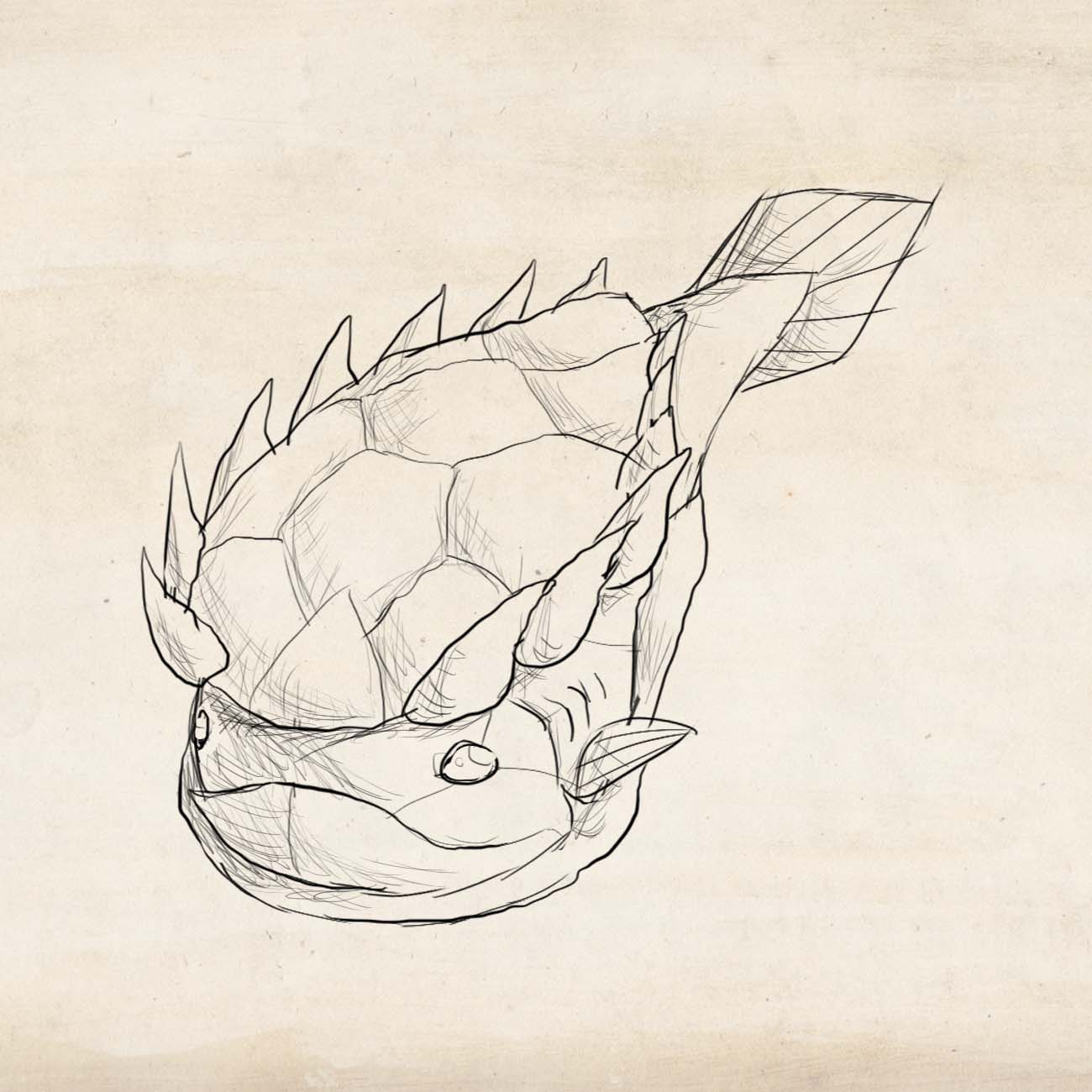Spikefish
Spikefish are semi-large creatures with a hard shell covering their entire bodies, coupled with a rather aggressive nature and unnatural swimming speeds. They'll attack almost anything, despite being small enough to be eaten with just a few bites given a predator is large enough. Spikefish live a life of rushing in head-first into conflict without thinking.
Basic Information
Anatomy
The Spikefish has a round pudgy body, with hardened scales near the mouth, and small pectoral fins. Their top and undersides are covered with a hard turtle-like shell, with grooves and spiky protrusions running along the sides. Their tails are long, with small diamond shaped fins that can propel the creature forward at unnatural speeds.
Genetics and Reproduction
Spikefish are generally not choosy when it comes to mating, able to choose partners if they have simply spent enough time together. Parents, however, are likely not to stick together for very long. They'll make nests by rubbing their bodies in the sand over and over again, creating indents with their round shells. The eggs are laid inside, half-buried with sand, and the parents part their separate ways. Some of the eggs will get eaten, but they come in vast numbers, and most will still survive till they hatch.
Growth Rate & Stages
As soon as the babies hatch, they'll learn to swim very early on, and will headbutt each other over and over again to get a feel for defending themselves. Their shells still take time to form, and most will be too small for predators to care about eating, but they'll be trained for survival very quickly. The babies are also a lot slimmer in youth, putting on mass as they eat as much plant matter as they can, becoming particularly bulky and quite literally hard-headed as adults.
Ecology and Habitats
Spikefish only live in the Forests of the Nightlight Zone, and mainly stay in areas above the seabed, rarely straying from one place. If they encounter any other creature that they deem a threat, they'll ram their hardy bodies into their heads in the hopes of making them back down, and are even more likely to do so with friends nearby. They'll occasionally touch ground to rest, but don't stay for long because of predators such as the Scythe Lobsters that hide in wait.
Dietary Needs and Habits
Spikefish will feed at any chance they get, sometimes feeding in groups. They like to take their time when consuming a meal, eating as much food as available to them, in the time span when they have a moment of rest. Surprisingly, they rarely seem to spar with each other over food given their aggressive nature. Their primary food sources are the edible varieties of Marine Lilypad and Red-Tip Kelp.
Biological Cycle
If a Spikefish grows old enough, tiny patches of algae may grow in the grooves of its shell, and its spikes will grow even larger than what is considered efficient for the species.
Additional Information
Social Structure
Spikefish will often gather in groups, mainly staying put in one area. They seem to only form these groups for defense in numbers, as none have shown much compassion for each other at all. They only time they'll interact is for mating purposes, or for defending each other against a threat.
Perception and Sensory Capabilities
The Spikefish's eyesight is better than most other creatures in its habitat, though its smell and hearing are mediocre at best. Some specimens choose to attack anything they see rather than take the time to listen to their surroundings at times.
Scientific Name
Ctenapsis caeruleum
Lifespan
Unknown
Average Weight
400 lbs.
Average Length
3 ft.
Average Physique
Round
Body Tint, Colouring and Marking
Pale blue skin, navy shell, glowing white eyes
Geographic Distribution
Very Low
Remove these ads. Join the Worldbuilders Guild










Comments